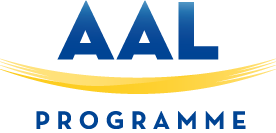Commercialization

Supporting the creation of favourable and solid conditions for the market exploitation of healthy ageing solutions represents a key issue and objective for the AAL Programme.
One way to measure the impact of AAL projects should be through their capacity to be scalable, repeatable and, finally, to present the potential to be deployed at commercial level. AAL projects are not just about research: they need to show a clear pathway to bring their product, solution or service to market.
In this summary we have identified the main trends, the most important lessons and the opportunities for current and future applicants. See full report below.

- Around half of the involved projects address the three main starting points, namely, the understanding of the potential market, the investigation of the competitors and possible business modelling for the results. Just one third of them explicitly considers pricing for the involved services and systems and exploitation action planning, however.
- Intellectual Property Rights and standards relationships are described in one out of five projects only.
- Just one out ten projects face a quantitative and structured business planning that represents the most concrete entrance door to the market.

There is an observed lack of knowledge dedicated by half of the surveyed projects in regard to understanding the potential market size that could and should be approached for results deployment. A profound understanding of the competitive field and actors is a must, to enable the solution developed in the project to be taken to the market and made available to a larger constituency.
The limited evidence of concrete and explicit pricing strategies for the intended products and the lack of effectively solved intellectual property allocation can be understood as a consequence of the average perceived distance from the market of the respective portfolio of projects.
A limited consideration is given in some of the analysed deliverables to the relevance that standardisation can have on market of the AAL results.

- There is a clear market demand for the AAL-supported solutions and their unique selling points.
- The Canvas business model and value proposition have been tools that have experienced an increasing focus and attention all along the AAL Programme deployment, which represent an opportunity for a more structured business development.
- Business modelling must be understood and deployed as a continuous process, not only from partners side but also at Programme level, making business development an iterative process and a better monitored and supervised task.


